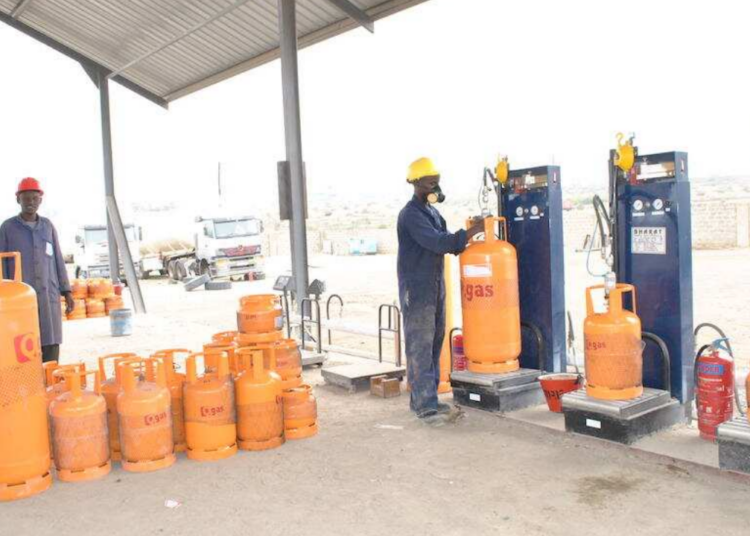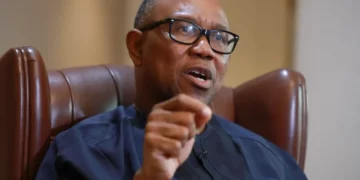The recent announcement banning importation into Nigeria from Niger Republic is fingered as responsible for the current hike in the price of cooking gas, known as Liquefied Petroleum Gas (LPG), LEADERSHIP has learnt.
To this end, marketers, under the auspices of the Nigerian Association of Liquefied Petroleum Gas Marketers (NALGAM), warned that if the government does not intervene promptly, the price of a 12.5kg cooking gas cylinder could reach as high as N18,000.
This is even as rising crude prices, among other factors, were equally fingered as responsible for the recent hike.
LEADERSHIP findings yesterday revealed that 1kg of cooking gas is now sold between N1,000 and N1,300 in Lagos and most states of the country. As of the first week of September, 2023, the same 1kg was selling between N600 and N700 but has now shot up by about 100 per cent in the last six weeks.
The Niger Republic ban, which came into force on October 1, 2023, is seen as critical to the country’s cooking gas pricing as Niger normally exports its surplus petroleum gas to neighbouring Nigeria, a major buyer of its LPG.
Previously, Niger’s surplus LPG was mostly exported to Nigeria, the largest consumer of the fuel in Africa with an estimated demand of around 1.8 million metric tonnes per year.
Market observers expect the ban to continue to affect Nigeria, which relies heavily on imports due to the lack of domestic LPG production.
To this end, some analysts suggest that Niger’s ban on LPG exports is in part motivated by political and diplomatic factors, as Nigeria is a member of ECOWAS.
As part of the coup-related sanctions, Nigeria cut off power supply to Niger in August. It used to supply 70 per cent of Niger’s electricity needs.
From marketers point of view, LPG depot prices are benchmarked against imported LPG because there is still a significant supply gap in the market which the more expensive import is filling.
Moreover, because local sourcing is limited, foreign exchange plays a critical role and determines the direction the price of the commodity swings.
Confirming the development in a chat with our correspondent, the managing director/CEO of Pinnacle Oil & Gas Limited, Robert Dickerman, says that crude oil market dynamics plays a key role in pricing the commodity.
According to Dickerman, 40 per cent of the propane and butane, which is what LPG or cooking gas is, there are two products.
He explained that propane is a three-carbon chain product and Butane is a four-carbon chain product and sixty per cent of it is imported, all coming from oil.
To him, “So it’s a global product, just like crude oil, just like natural gas, and its price follows a global market price. And when crude oil prices go up, which they have – they’re close to $100 a barrel.
“Last time I checked, they were about $95 a barrel. So, the price of imported LPG will go up correspondingly.”
He further noted that the Nigeria Liquefied Natural Gas (NLNG) produces 40 per cent and the rest is imported.
“There’s nothing sinister going on. There’s nobody planning it. And they will go up and they will go down. That’s the beautiful thing about global market prices. They don’t just go up. When there are efficiencies, high prices will create additional supply, which will then reduce prices. It’s a self-balancing system,” he said.
The main sources of local LPG supply are NLNG, Bonny (about 400,000MT per annum), and Kwale Hydrocarbon Ltd, Kwale (about 120,000 MT per annum).
Others are Greenville LNG, Rumuji, PNG Plant, Umutu, and recently, Panocean, Ovade.
It could also be sourced from Mobile BRT, Bonny, although volumes from this source have a very good potential for LPG sourcing, there are no committed volumes.
LEADERSHIP reports that when LPG is sourced locally, payment is made in Naira, and port charges are cheaper (for NLNG and Mobil BRT, which are offshore), pointing to cheaper landing cost when compared to imports.
For the in-land LPG, they are not offshore and do not incur freight cost.
However, LPG sourced via import is more expensive because it involves every aspect of the supply chain and the corresponding cost.
Freight cost, clearing fees, and FX rates are the main component of the cost difference when compared to locally sourced LPG.
So when imported LPG is taking care of over 50 per cent of supplies, the LPG prices in Nigeria have to be benchmarked by it.
Meanwhile, major oil marketers have called for concerted efforts and policies to compel Nigerians to shift to alternative sources of energy in the face of rising energy costs.
In particular, the marketers said efforts should be geared towards making Liquefied Petroleum Gas (LPG), called cooking gas available.
The Nigerian Association of Liquefied Petroleum Gas Marketers (NALGAM) president, Oladapo Olatunbosun, has warned that if the government does not intervene promptly, the price of a 12.5kg cooking gas cylinder could reach as high as N18,000.
He emphasised that concerted efforts are needed to ensure the product remains affordable for all Nigerians.
We’ve got the edge. Get real-time reports, breaking scoops, and exclusive angles delivered straight to your phone. Don’t settle for stale news. Join LEADERSHIP NEWS on WhatsApp for 24/7 updates →
Join Our WhatsApp Channel










